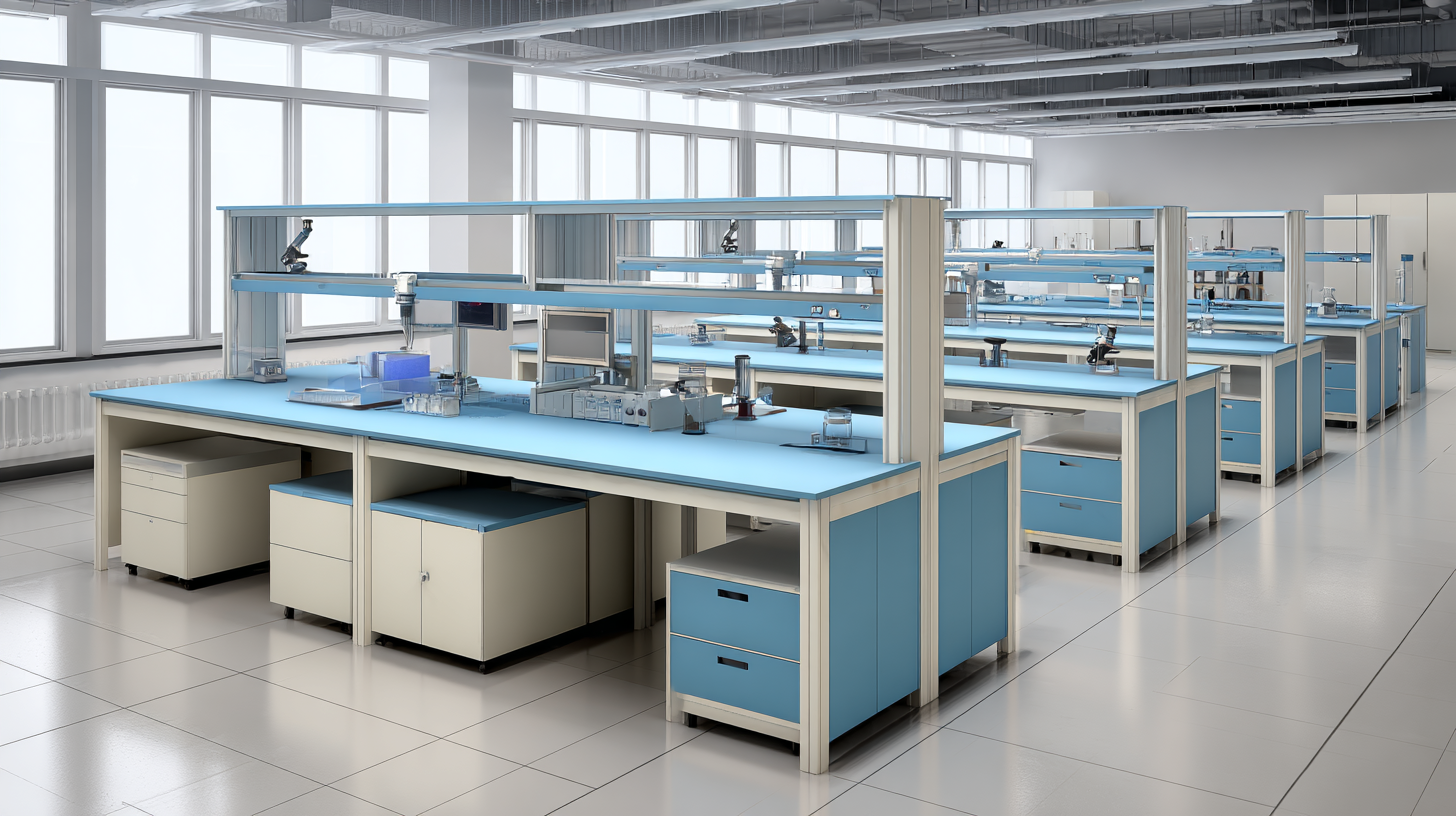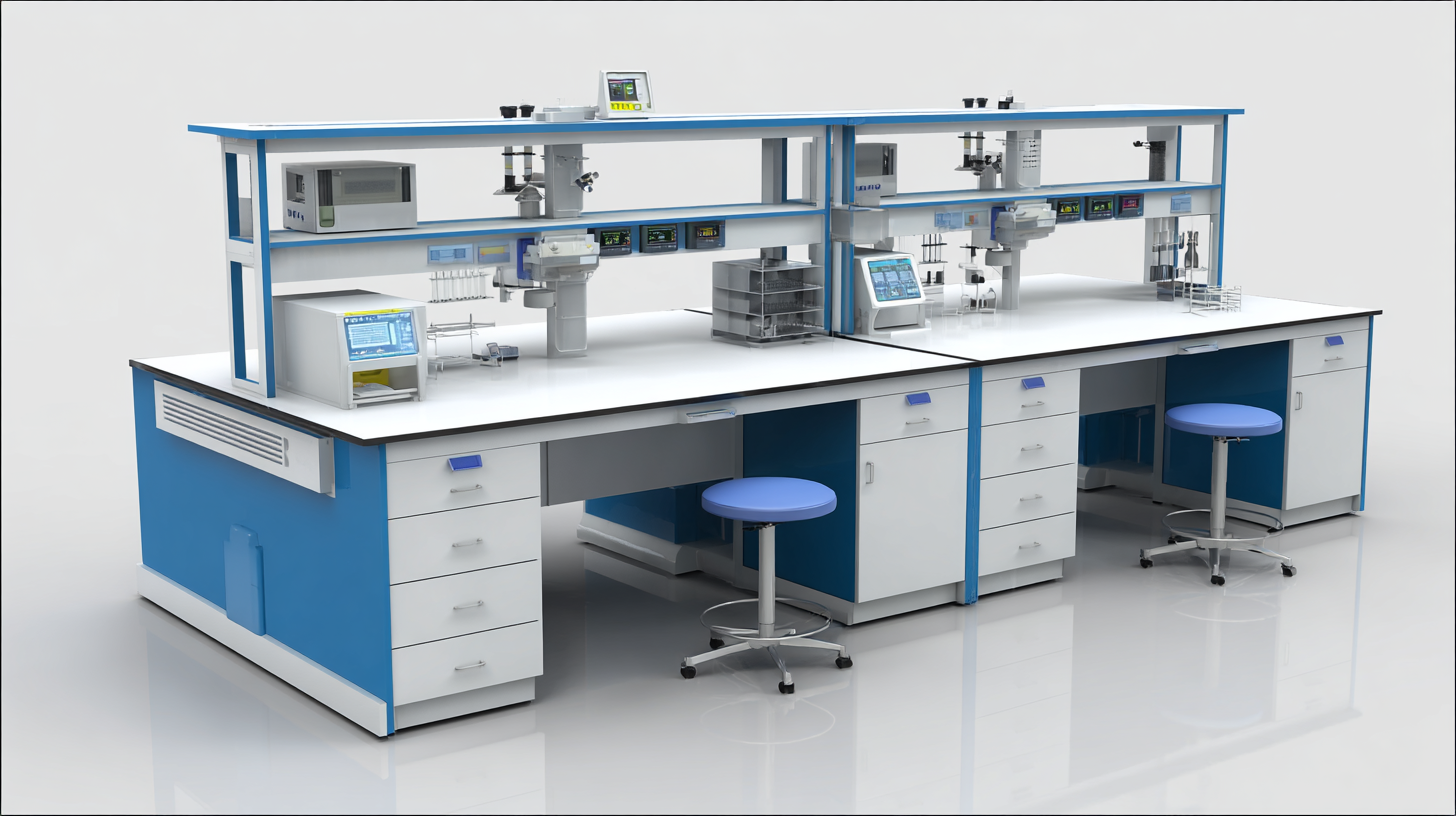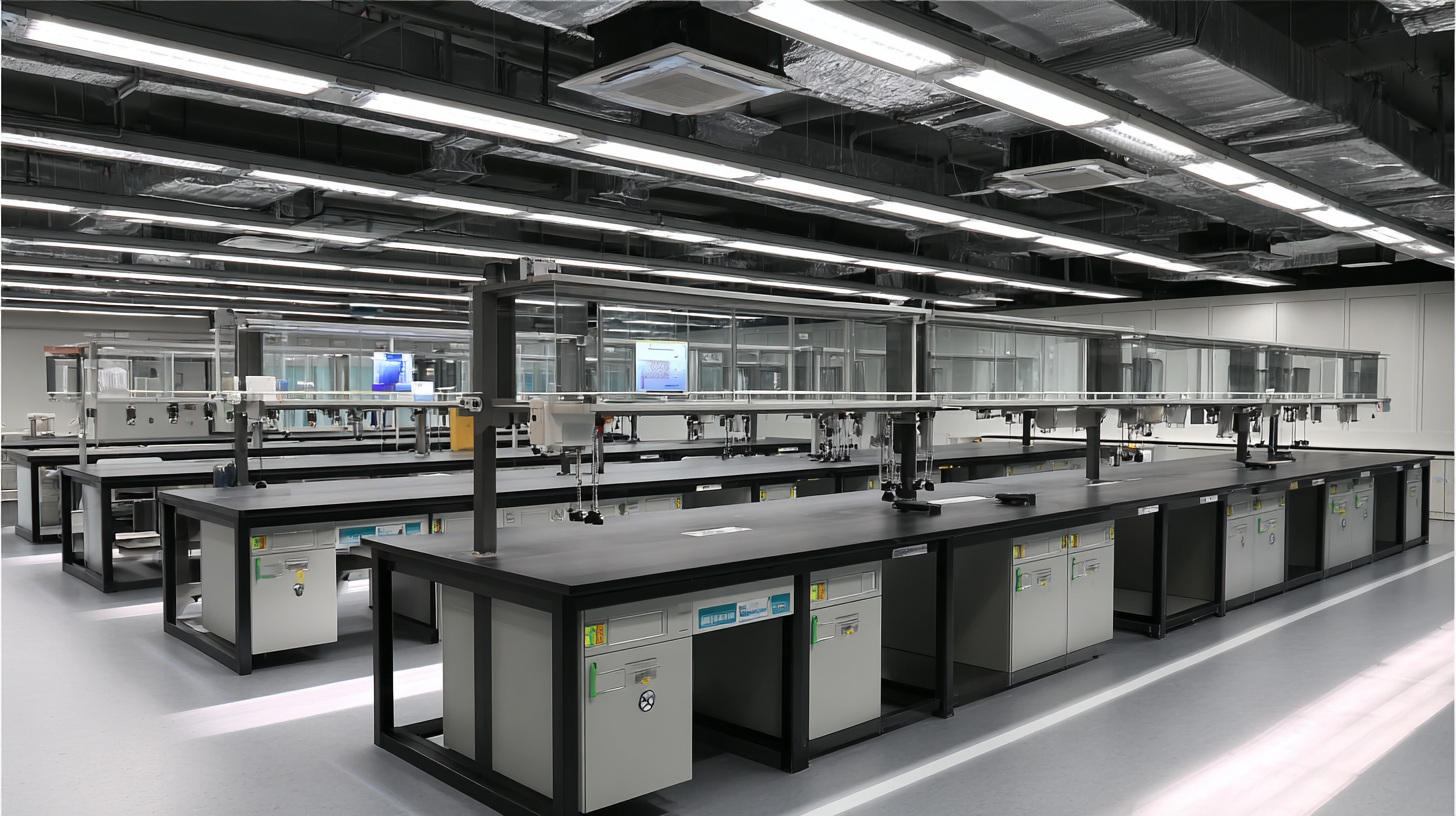In the quest to establish an efficient and effective science laboratory, selecting the right manufacturer for your Science Laboratory Bench is a critical decision that shapes the overall functionality and sophistication of your workspace. The choice of a manufacturer is not merely about cost or aesthetics; it involves a comprehensive understanding of industry standards, export and import certifications, and quality assurance protocols that ensure the bench will meet rigorous scientific demands. This blog will delve into the essential criteria for selecting the ideal manufacturer, leveraging insights from industry data to guide you in making an informed decision.

By considering factors such as compliance with international standards, customization options, and after-sales support, you can ensure that your laboratory is equipped with the best possible benchmarking tools to enhance research productivity and innovation.
Choosing the right laboratory bench is essential for optimizing research efficiency and results. In 2025, key factors influencing laboratory bench selection include adaptability to advanced technologies, ergonomic design, and material durability. Recent industry reports indicate that laboratories focusing on regenerative therapies, such as regenerative endodontic therapy, are increasingly prioritizing benches that can support complex experimental setups and promote ease of collaboration among researchers. Data suggests that 75% of laboratories are now investing in benches made from high-quality, chemical-resistant materials to facilitate the diverse range of substances used in modern experiments.
Moreover, the integration of smart technology into laboratory benches is projected to grow significantly. Reports show that laboratory managers are seeking benches equipped with integrated power sources, data collection systems, and modular designs that allow easy reconfiguration. As regenerative endodontic therapy advances from the bench to clinical practice, this demand highlights the critical role that well-chosen laboratory equipment plays in fostering innovation and efficiency in life sciences research. The selection process in 2025 must therefore align with these evolving needs, ensuring that the laboratory infrastructure can keep pace with scientific advancements.
Selecting the right materials for laboratory benches is crucial for ensuring durability and performance in scientific environments. According to a report from the International Laboratory Equipment Manufacturers Association (ILEMA), laboratory benches constructed from high-density polyethylene (HDPE) demonstrate a 30% longer lifespan compared to traditional wood materials. This enhanced durability is essential in environments where chemical spills and rigorous cleaning protocols are commonplace.
Moreover, the report highlights that the resistance to corrosion and moisture of HDPE significantly reduces maintenance costs, making it a preferred choice for many laboratories.
In addition to material durability, performance factors such as thermal stability and load-bearing capacity are equally important. A recent survey by the Laboratory Design Magazine revealed that 85% of laboratory managers prioritize materials that can withstand high temperatures and heavy equipment. For instance, phenolic resin, often used in laboratory surfaces, can endure temperatures up to 180°C while maintaining its structural integrity. This characteristic is vital for laboratories engaging in high-heat analyses and experiments, thereby underscoring the significance of selecting the right materials to optimize laboratory functionality and safety.

When choosing a manufacturer for science laboratory benches, understanding their certifications and standards is essential for ensuring the reliability of laboratory equipment. Reliable manufacturers adhere to rigorous certifications that not only prove compliance with safety and operational standards but also enhance product credibility. For instance, certifications like CE mark or those issued by recognized testing organizations ensure that the equipment meets European safety and environmental regulations, which is increasingly important as market scrutiny intensifies.

In addition to standard certifications, manufacturers must also engage in ongoing quality improvement activities. Recent initiatives by market regulatory authorities have emphasized the importance of technical support and accountability in maintaining high standards for equipment. Registered quality improvement programs can help manufacturers resolve industry-specific challenges, ensuring that laboratory benches are produced with the latest technology and adhere to industry requirements. As the landscape of laboratory equipment continues to evolve, selecting a manufacturer with robust certification and quality assurance processes will provide labs with the reliability they need to excel in scientific exploration.
As the demand for science laboratory benches continues to grow, customization trends have become vital in laboratory design. According to a recent report by MarketsandMarkets, the global laboratory furniture market is poised to reach USD 7.8 billion by 2026, with a significant portion attributed to custom-designed solutions. These designs cater to the unique needs of various research fields, from biotechnology to pharmaceuticals, where specific functionalities and ergonomics are paramount.
Customization trends are also influenced by advancements in technology and the increasing emphasis on sustainability. A survey conducted by Lab Manager noted that 63% of laboratory managers are prioritizing environmentally-friendly materials in their lab designs. Customization allows manufacturers to offer products that not only meet functional requirements but also align with the growing demand for green practices. This integration of aesthetics, functionality, and sustainability showcases how tailored designs can impact the efficiency and effectiveness of research environments.
In 2025, the landscape of manufacturing laboratory benches is poised to evolve significantly, driven by advancements in materials and production techniques. A recent report from the Market Research Institute indicates that companies adopting automated manufacturing processes have seen a reduction in production costs by up to 30%. This shift not only enhances efficiency but also ensures that manufacturers can offer competitive pricing without compromising quality. Evaluating these cost-effectiveness metrics is crucial for laboratory managers looking to invest in durable and reliable bench solutions.
Tip: When choosing a manufacturer, consider their commitment to sustainable practices. A survey by the Sustainable Laboratory Coalition revealed that laboratories prioritizing eco-friendly materials experienced a 25% increase in overall satisfaction with their purchases. Understanding the environmental impact of your chosen materials can add long-term value to your investment.
Moreover, the growing trend of customization in laboratory furniture reflects a shift towards personalization to suit specific research needs. According to the Custom Furniture Council, customized lab benches result in improved functionality and worker efficiency, highlighting that up to 40% of labs prefer bespoke solutions over off-the-shelf products. Evaluating these preferences can guide decision-making and ultimately lead to enhanced operational performance.
Tip: Don’t hesitate to request prototypes or design samples before making a final decision. This hands-on approach can provide invaluable insights into how well a product might meet your specific requirements.
| Manufacturing Process | Cost per Unit ($) | Production Time (Weeks) | Material Used | Durability Rating (Years) |
|---|---|---|---|---|
| Steel Fabrication | 300 | 6 | Stainless Steel | 15 |
| Laminate Over MDF | 150 | 4 | MDF, Laminate | 5 |
| Polypropylene | 250 | 5 | Polypropylene Plastic | 10 |
| Wooden Study Benches | 180 | 3 | Plywood, Finish | 7 |
| Custom Modular Systems | 500 | 8 | Various Materials | 20 |
